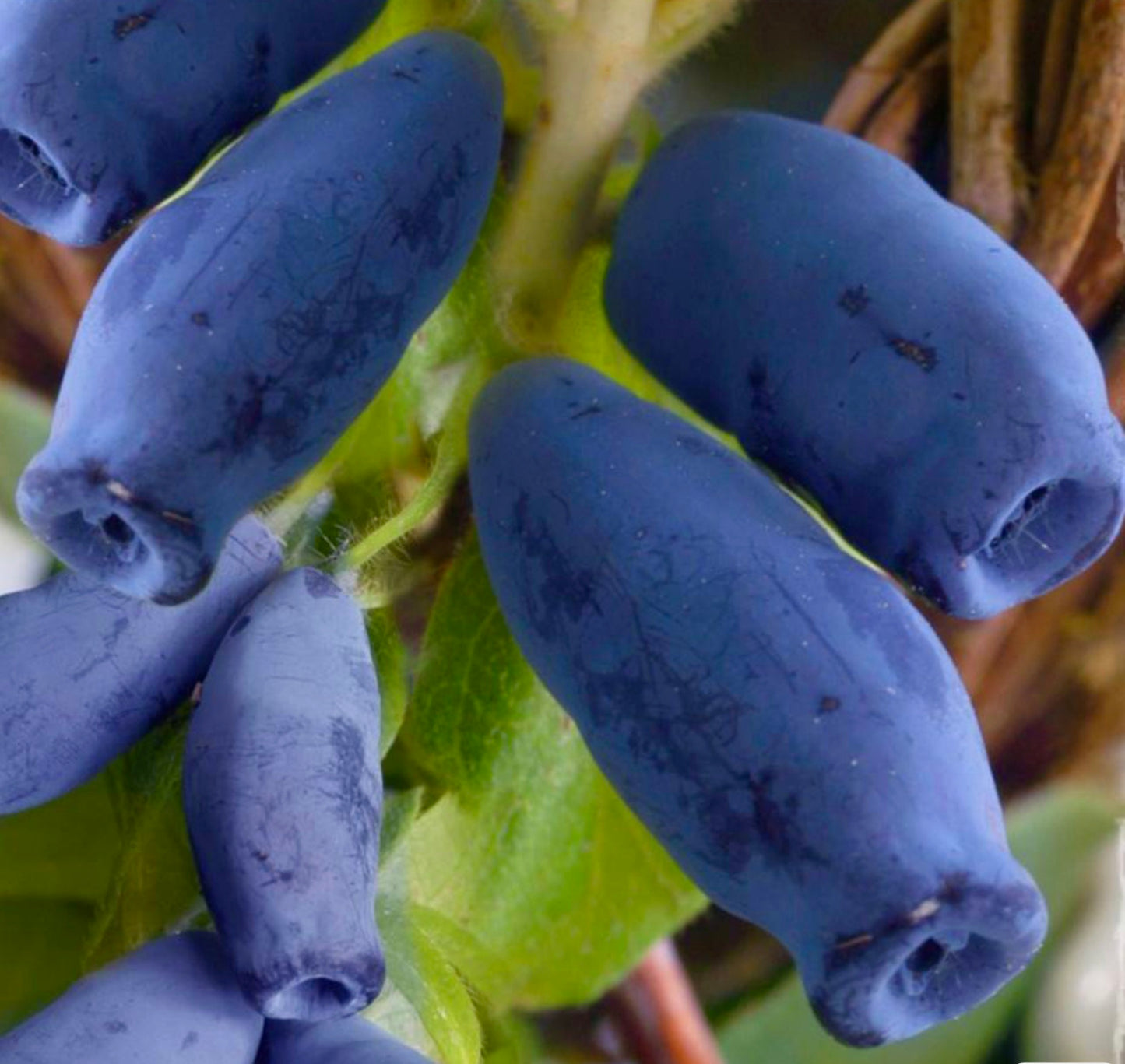- Catalogue Plants
Lonicera caerulea var. kamtschatica SIBERIAN BLUEBERRY 40-80cm
Lonicera caerulea var. kamtschatica SIBERIAN BLUEBERRY 40-80cm
Couldn't load pickup availability
Plant Description
Lonicera caerulea var. kamtschatica, commonly known as the Siberian Blueberry or Honeyberry, is a variety of honeysuckle that is valued not only for its attractive flowers and foliage but also for its edible fruits. Despite its common name, it is not a true blueberry but bears small, elongated, blueberry-like fruits that are rich in vitamins, antioxidants, and have a unique, sweet, and tangy flavor. This plant is native to the Kamchatka Peninsula in Russia, as well as other parts of Asia, and is well-adapted to cold climates, making it an excellent fruit crop for northern gardens.
Description
The Siberian Blueberry is a deciduous shrub that typically grows to about 1.5 to 2 meters (5 to 6.5 feet) in height and width. It features dark green, oval leaves and produces fragrant, white to creamy-yellow flowers in early spring, which are followed by the edible fruits. The fruits are about 1 to 2 centimeters long and ripen in early to mid-summer, depending on the climate and conditions.
Cultivation Tips
Climate and Placement: Lonicera caerulea var. kamtschatica is remarkably hardy, capable of withstanding temperatures as low as -40°C (-40°F), making it suitable for cultivation in USDA zones 2 through 7. It prefers a sunny to partially shaded location that receives at least six hours of direct sunlight daily.
Soil: This variety thrives in well-drained, loamy soils with a pH between 5.5 and 7.5. It is tolerant of a wide range of soil types but does best in soils that are moist but not waterlogged.
Watering: Regular watering is important, especially during dry periods and when the plant is establishing itself. However, once established, the Siberian Blueberry is somewhat drought tolerant.
Fertilizing: Apply a balanced fertilizer in early spring to support healthy growth and fruit production. Additional applications of a potassium-rich fertilizer can be beneficial during the fruiting season to enhance fruit quality.
Pruning: Pruning is not strictly necessary but can be performed to maintain the desired shape and size of the shrub. It is best to prune in late winter or early spring before new growth begins.
Pollination: For optimal fruit production, it is recommended to plant at least two different cultivars of Lonicera caerulea var. kamtschatica nearby to ensure cross-pollination.
Pest and Disease Management: This plant is relatively resistant to pests and diseases, but keeping an eye out for common issues and practicing good garden hygiene can help prevent problems.
Conclusion
Lonicera caerulea var. kamtschatica 'Siberian Blueberry' is a versatile and hardy plant that offers both ornamental value and tasty fruits. Its ease of cultivation, combined with its resilience to cold temperatures, makes it an attractive option for gardeners looking to grow fruit in cooler climates. With the right care and conditions, this unique and valuable plant can be a delightful addition to any garden.
IMPORTANT: Please be aware that picture 1 show flower of adult plant not for sale, the offer is for a plant in the dimension indicated in title description.
Botanical family: Caprifoliaceae
Botanical genus: Lonicera
Botanical species: Lonicera caerulea var. kamtschatica
SKU:BA-2334-S
Cultivation
Cultivation
Info and Disclaimers
Info and Disclaimers
Plant Height:
Plant Diameter:
Pot Size:
Grafted/Not Grafted:
Disclaimer: Be aware that most plants change across seasons. If present foliage, could have been fallen or change in its color.


